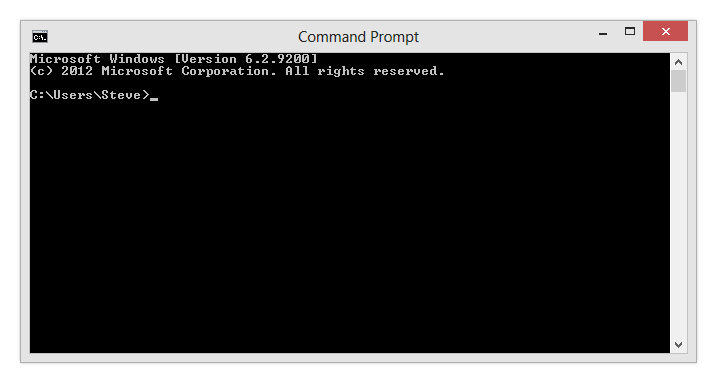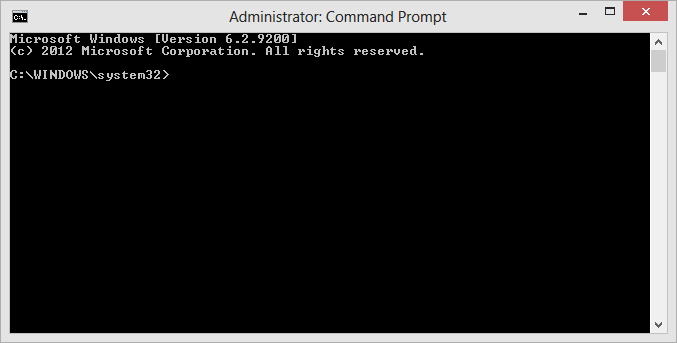-
-
products
-
resources
-
support
-
company
-
Ten Useful Command Prompt Instructions in Windows
By Steve Horton January 09, 2013command line, command prompt, dos box, windows4 CommentsTen Useful Command Line Instructions
Don’t run away just because “Command Line” is in the title. These instructions, entered in a special window called the Command Prompt, are easy to execute, easy to understand, and will help greatly when managing your computer. First off, let’s start on letting you know how to get into the Command Prompt, so you can enter a Command Line Instruction.
Reaching the Command Prompt
- Click Start (Windows Key + X in Windows 8 )
- Click Search
- Type CMD and press Enter

This is what the command prompt looks like without admin access. Your username will be there, obviously.
Note that many of these commands require opening the Command Prompt as an administrator, meaning you must be logged in as an admin or know the password. To open a Command Prompt as an administrator, hold down Ctrl + Shift + Enter after typing CMD in the third step above. You’ll need to enter the password or verify this using User Account Control.

And here’s what it looks like with admin access.
Once you have the Command Prompt open, check out these commands:
sfc /scannow
This command serves the function of scanning, repairing, replacing and restoring any damaged, missing or altered operating system files. Using this command can assist in recovery from a virus or something else that may be causing you performance issues.
ipconfig
This command will allow you to check your connections. Relatively straightforward — do it if you think there’s any problems with any of your connections.
ping
Pinging is an easy way to check whether or not you’re connected to the internet, and also a great way to see the quality of your connection to a particular website or server. Type in “ping reviversoft.com” and see what results you get!
msconfig
This opens up a menu of boot options — including what services start when you turn on your computer — which can be extremely useful if you’re plagued with slow startup times or general lag while using your computer.
cleanmgr.exe
This will run a Disk Cleanup program on your computer, which will free up space in your hard drive and may also boost performance.
chkdsk
This will run a Disk Check, which will fix any problems you may be having with your hard drive. Warning: this takes a really, really long time and it will lag your computer. It’s a good thing to do now and again, though.
desk.cpl
This will open a screen that lets you change your display, display orientation, and display resolution.
start
Know the name of a program file but don’t feel like searching for it? Just type in the name of the proper executable after start, and you’ll be good to go. If you use Google Chrome, a good example would be:
start chrome.exeperfmon /res
This will open up your Resource Monitor and view your current system performance. While similar to the Task Manager, the Resource Monitor is very specific about what the active processes and services are doing and what effect they’re having on your performance — find what’s been slowing you down by using this.
dxdiag
Last but not least, what if you’re having graphics issues while watching a movie or playing a game? DirectX is the software that deals with how your video card displays what’s on your monitor, and typing in dxdiag opens up some helpful diagnostics that can help you get your problem fixed.
Was this post helpful?YesNoFree Driver Updates
Update your drivers in less than 2 minutes to enjoy better PC performance - Free.
Free Driver Updates
Update your drivers in less than 2 minutes to enjoy better
PC performance - Free.
Didn't find your answer?Ask a question to our community of experts from around the world and receive an answer in no time at all.most relevant recent articles Pin It on Pinterest